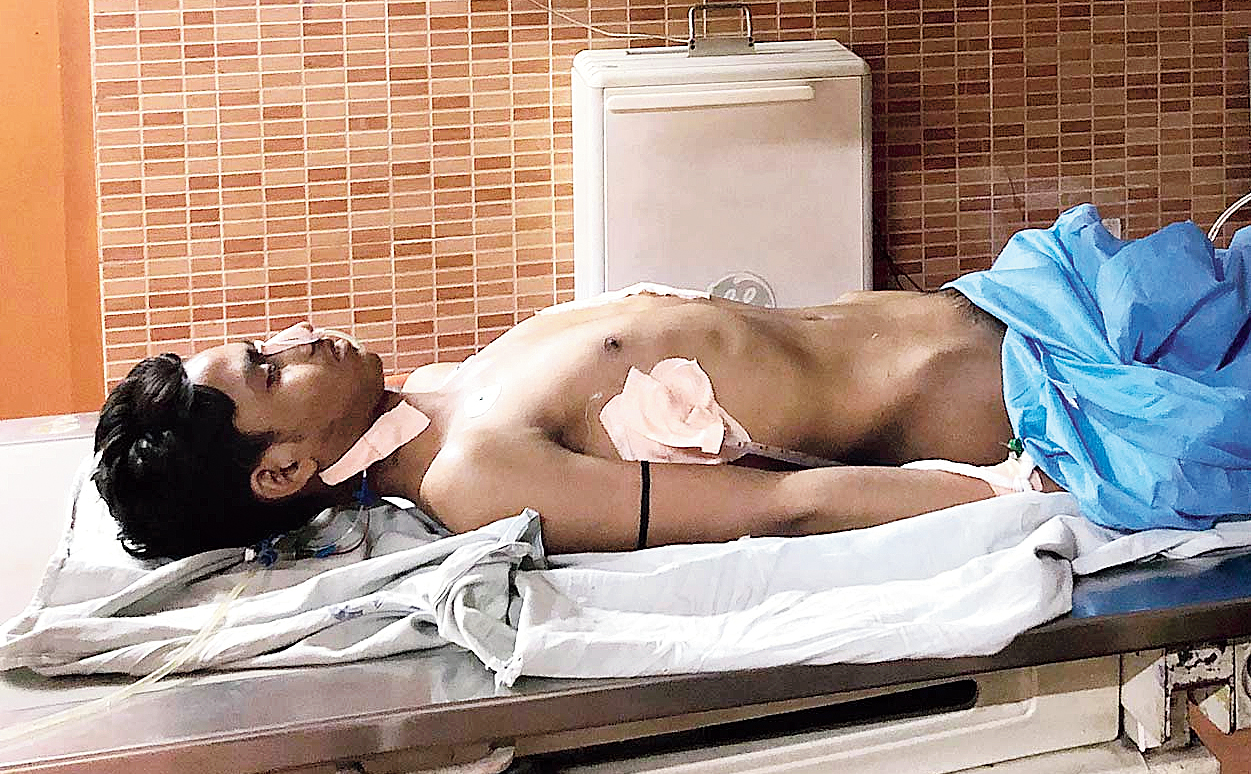When Rambhakt Gopal popped up in front of anti-citizenship-act protesters on January 30 and fired at a Jamia Millia Islamia student, he could hardly have realised he was pioneering a dark trend.
Two lone-wolf gunmen followed in his footsteps and menaced Delhi’s air — Kapil Baisala at Shaheen Bagh on February 1 and Shahrukh who fired in front of a policeman during the riots on February 24.
What these high-profile instances merely hinted at, the debris of the communal rioting that began on February 23 night has laid bare: the truth that the nation’s capital has become an arsenal of illicit firearms.
Police sources said the proportion of gunshot wounds suffered during the riots was unusually high for any communal violence and indicated a pre-planned carnage using illicit weapons brought in from the neighbouring BJP-ruled states of Uttar Pradesh and Haryana.
One estimate suggested that more than 70 of the 150 or so wounded who were initially brought to hospitals were victims of gunshot inflictions.
This was perhaps India’s first communal riot in which guns — mostly illicit firearms — were so widely used. Traditionally, the preferred weapons of rioters and arsonists have been swords, daggers, iron rods, batons and even crude instruments of assault like bicycle chains and hacksaws.
The police themselves betray surprise at how rampantly guns were used this time. Although they don’t seem to have a clear answer why, the police seem not to have yet made the preponderance of guns in the capital and their extensive use during the riots a subject of serious inquiry.
An officer at the police’s arms-licensing department said that nearly 1,000 people are issued gun licences in Delhi every year, of whom 500 to 600 get them for personal safety, 50 to 100 are shooting enthusiasts and the rest inherit the licence.
“It’s a serious law-and-order issue how such a huge cache of illegal firearms made its way into Delhi. It is evident that the police deployed at the bordering areas in Uttar Pradesh and Haryana looked the other way,” he said.
Videos have come up showing guns being fired by a mob standing on the terrace of a nursing home in riot-hit Yamuna Vihar. The video shows a man in a black jacket and helmet firing at the crowd below.
In another video a gunman is seen firing inside an alley in Brahmpuri, northeast Delhi, at a target outside the frame more than once. The police said they were examining the video to trace the gunman.
Officers probing the Delhi riots suspect that the attackers were mostly from Uttar Pradesh and Haryana, where they said a country-made pistol costs between Rs 2,500 and Rs 4,000 in the grey market.
“The initial probe suggests the rioters brought truckloads of stones and bricks from outside Delhi as well, along with petrol bombs. This implies an organised assault targeting a particular community,” an officer said.
An official in the Union home ministry, to which the Delhi police report, corroborated the outsider theory and alleged the force did not do enough to prevent the entry of rioters from the neighbouring states.
“The police should have sealed the (inter-state) borders as soon as violence erupted on Monday. This could have prevented the entry of criminals from the neighbouring states,” he said.
A police officer told this newspaper that “more than 600 shots were fired in northeast Delhi” during the riots and caused many of the deaths.
“The majority of those admitted to the Guru Tegh Bahadur Hospital had suffered gunshot wounds apart from stab injuries, hits by blunt objects, and burns. The high number of deaths from firearm injuries is unusual in communal clashes where, past records suggest, stab wounds and burns dominate,” he said.
Another senior officer with firsthand knowledge of how the violence was conducted furnished a general explanation: northeast Delhi, a low-income belt, teemed with criminal elements, he said.
The area, home to large migrant populations from mainly Uttar Pradesh and Bihar, has over the past few years emerged as the capital’s criminal underbelly. It has reported the highest number of street crimes, from snatching and carjacking to murder, in the past two years.
“Northeast district is home to a large number of resettlement and unauthorised colonies inhabited by the poor. It has easy access to neighbouring areas in Uttar Pradesh and Haryana,” a police source said.
“Some of these colonies fall in the riot-hit areas of Jaffrabad, Gokulpuri, Maujpur, Seemapuri, Shahdara and Khajuri Khas. On the other side is a mix of rural areas and unauthorised colonies bordering Haryana.”
In some of these pockets, Hindus and Muslims live cheek by jowl.
“These areas are without adequate police presence, streetlights, CCTVs or safe public transport with last-mile connectivity, and are infested with criminals from Uttar Pradesh and Haryana. The easy availability of weapons in these two states has made this part of Delhi a crime hotbed,” the source said.
A large number of jobless young men living in these slums are engaged in petty crime such as snatching and mugging, he said.
A probe has revealed that Baisala and Rambhakt Gopal had procured their weapons from the grey market in Noida, western Uttar Pradesh, while Shahrukh had got his from Munger in Bihar.











